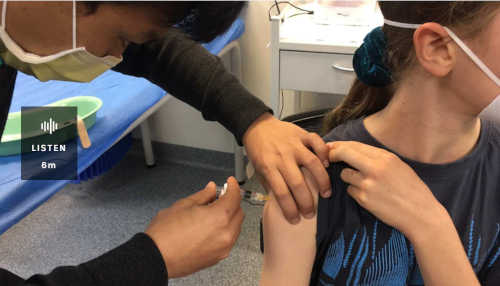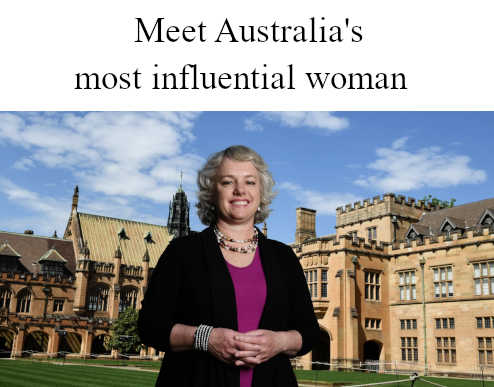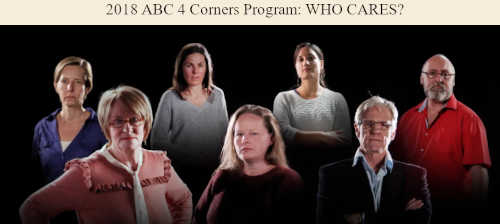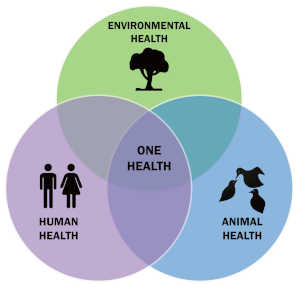Be careful of offering advice because someone might take it. This is something these 12 experts referred to below might have considered before they decided the Pfizer, AstraZeneca and Moderna offerings were safe, effective and needed.
Australia’s very own misinformation 12 have now co-authored a paper that will provide:
Key lessons from the COVID-19 public health response in Australia – The Lancet Regional Health – Western Pacific.
I will first introduce you to the authors through links to their articles and comments and then discuss each of their 10 key lessons. All contributors appear to be strongly behind the official Covid-19 response.
My comments are those of an ignorant observer. I can’t claim clinical qualifications or special insights but I have watched as only one side of a story has been told. I have also listened to some of the smartest people in the world who have made me suspect that something is wrong. That suspicion prompts me to write now.
I am not sure many in this group are the right people to be offering further advice. They live in a world where masks, lockdowns and distancing are effective, PCR tests are perfectly accurate, the injections work beautifully and adverse events are rare, if they happen at all.
The authors have been carny barkers for Big Pharma bioweapons? Shot one, failed then shot two but they continued to call: “Step right up”. Sadly, many people have.
The article’s contributors:
Jocelyne Basseal, Ben Marais and Tania Sorrell:
Were co-authors of this article: How should an Australian ‘centre for disease control’ [CDC] prepare us for the next pandemic? Do you think this is a good idea? The authors explain Australia is the only country without a CDC and Anthony Albanese is keen to give us one.
Peter Collignon explains:
“The reality is, people who most have to fear COVID, are adults who are unvaccinated“. He added the fact that the unvaccinated “disproportionately” make up “the number of people in hospitals and ICU” as another reason to make amendments“.
Julie Leask:
The overall winner of The Australian Financial Review Women of Influence Award in 2019. Wasn’t that timely? Julie also carries the title Advisor to the WHO on Vaccine Uptake. No-one has worked harder than Julie to overcome vaccine hesitancy. I wonder whether someone who wins awards for influencing people then deserves congratulations for convincing people to make risky life-threatening decisions based on shonky information.
Catherine Bennett:
Has been a strong supporter of these injections for children. From her conversation with radio TripleMMM:
“Parents have been vaccinated themselves [and] are keen for their kids to be able to go to school, stay in school and have less risk of infection given we still don’t fully understand the risk of infection in children“.
Bart Currie:
Is on the board of National Centre for Immunisation Research and Surveillance (along with the peripatetic Sharon Lewin). Commenting on Pfizer as early as 30th May 2021, the NCIRS website states with regard to Pfizer injections:
“Close to two-thirds of people reported no reactions after the first dose, and 40% reported no reactions after the second”. Oh, thanks Bart. So everything is going great.
David Durrheim:
Is a consultant to the World Health Organization. He is quoted on The Sydney Children’s Hospital Network website:
“While we can see moderate protection against hospitalisation for the Omicron variant following two vaccine doses, protection wanes from 2 to 3 months after the second dose but is increased significantly following a booster,” he said. David appears another strong advocate of injecting children.

“Two doses of the Moderna COVID-19 vaccine were safe in children aged six months to five years and triggered similar immune response and protection against infection as that seen in young adults, according to preliminary results from a phase 2/3 clinical trial published yesterday in the
New England Journal of Medicine“.
Emma McBryde:
Is quoted on the James Cook University website:
“If at the midrange of most estimates, a reproduction number of 5, at least 85 per cent of the population, including children, would need to be vaccinated to achieve herd immunity”
Peter McIntyre quoted here:
“As a paediatrician specialising in infections and vaccines for more than 25 years, two things are apparent to me. First, for a six-month-old baby who has lost all the antibodies from their mother, all viruses are new, so immunity must start from scratch. Second, the main thing we ask from vaccines is to protect us against becoming severely ill, not to prevent infection of any severity”.
David Smith:
Chief Investigator at APPRISE, Australian Partnership for Preparedness Research on Infectious Disease Emergencies. He was co-author of an article that found:
“COVID-19 vaccine development has been widely awaited, but concerns around acceptance and political polarisation prevail. We sought to determine the willingness of Australians to take a (then prospective) COVID-19 vaccine, compared with their previously recorded opinions about other vaccines. We also sought to determine reasons for hesitancy, levels of support for possible government mandates, and the political basis of support”.
Like a lot of these investigators, the safety of these injections appeared to be beyond their remit.
Fiona Russell wrote:
“The rollout of the Pfizer COVID-19 vaccine in Australia and the Therapeutic Goods Administration’s (TGA) approval of the AstraZeneca vaccine is welcome news indeed. Welcome for Australia and our region. But there’s still a lot we don’t know that we’ll only find out as important real-world data comes in“.
How right was Fiona?
Ben Marais gets a second reference for an extraordinarily reckless radio interview with vaccine friendly ABC tout Fran Kelly:
Calls grow to vaccinate children across Australia
And a lot of the calling was being done by Ben with help from Catherine Bennett.

A 12-year-old girl has her flu shot in a Melbourne doctor’s surgery slightly earlier than previous years due to coronavirus, on April 10, 2020.(ABC News: Freya Michie)
One last point, it is remarkable how many of the participants in this project had links in varying degrees to Sydney University. This establishment played a very central role in the Covid-19 propaganda war through people like Julie Leask, Claire Hooker and their colleagues so, perhaps, this should not be surprising.
10 Key Lessons
I have paraphrased or abbreviated the headings . The original headings can be found by referring to the original document. See link above.
1. Border closures and lockdowns were a great success. There simply needed to be a little more thought in how and when they are deployed.
Were they successful? Were they needed at all?
Dr Harvey Risch points out that all lockdowns really do is delay the inevitable. In support of Risch’s argument, Victoria has the highest number of Covid-19 deaths by state at around 40% with only 25% of the population. Andrews made Victoria the world record holder for the longest lockdown by any state in the world. . We won’t labour this point but surely there is a debate that might be had. We weren’t allowed to have one. The authors are not entitled to gloss over this question as resolved.
2. Disease modelling was valuable to assist decision making and helped push the public towards the injections
Laughably, under this item we are told transparency is important and the public should be informed about the limitations of the modelling. Supporting documents were from July & November 2020 with another from May 2021. The latter two emphasise the modelling by the Imperial College of London. By now, does anyone take that seriously.
Here is an excellent discussion of the quality of such modelling and the history behind it.
It is hard to believe that anyone could have written this recently:
“Most models provide disease incidence, morbidity and mortality predictions associated with different interventions, but there is a need to also consider the social, educational, economic and broader well-being impacts of proposed interventions”.
Did these models reflect the numbers of deaths and adverse reactions, let alone “broader well-being impacts”? Can we discuss them NOW?
3. We need a US-like CDC to coordinate and centralise decision making
Our crack team is calling for a US-like Centers for Disease Control (CDC). They assure us centralising appalling decision making and messaging in a Federal body will produce a better result than a state based approach. Bad information promulgated from a central body with more power guarantees faster deployment of idiocy.
[We need ] “to proactively collate, analyse and monitor disease surveillance data at a national level with variable capacity in different States and Territories”. We are told this will also promote ”more timely data analyses and, therefore, improved intelligence to inform decision-making and policy setting”.
Is this why we need a CDC? To help them to jack their prices in Australia? Do we need a CDC director who supposedly contracted Covid-19 after 5 failed injections and then urges us to take more?
4. The utility of pathogen genomics, novel vaccine and more perennial, ubiquitous disease surveillance and response
The same effusive, gee whizzery is used to celebrate the speed with which PCR-tests were put to use. Assessing the supposed effectiveness of these tests is something that demands better than the cheerleading of these authors:
“Highly accurate polymerase chain reaction (PCR) testing was developed rapidly and deployed widely at scale”.
These tests were used to scare us. That was their success. Tests were amplified by 40-45 cycles, in New South Wales, way above anything the test inventor Kary Mullis recommended. The WHO went from the usual measure of pandemic threat, by counting deaths, to the highly dubious and more prevalent use of cases.
Our heroes continued:
“Effective implementation of COVID-19 vaccine programmes was the most important public health intervention. Excellent effectiveness against severe disease was demonstrated by a range of novel vaccine technologies approved for emergency use by the WHO, including mRNA, viral vectored and protein subunit vaccines”.
Excellent Excellence upon Excellence.
And even more excellence:
“Excellent effectiveness against severe disease was demonstrated by a range of novel vaccine technologies approved for emergency use by the WHO, including mRNA”.
What is the measure here? Saying something does not make it so. This is part of the genius behind media control. Keep telling lies and make sure no-one turns up on mainstream media to contradict them.
5. Timely, clear and open communication supported by evidence to promote cooperation and trust
Are our authors really the people to advise on this? So many of the collaborators in this document have merely been Big Pharma touts. Some of them have been paid to develop strategies to remove “vaccine hesitancy”. Central to this have been detailed, well-funded strategies for propagandising the public that paid little attention to facts.
Julie Leask is the standout here. As far back early September 2020, Leask was pushing techniques for deflecting the concerns of the vaccine hesitant and emphatically resistant. As understanding of the inefficacy and dangers of these poisonous injections has grown, her message did not shift.

Another example of her work is this WHO publication:
“Behavioural and social drivers of vaccination: tools and practical guidance for achieving high uptake” This was put together by a group she chaired along with Noel Brewer of Chapel Hill, University of North Carolina. Does this look like someone leading a campaign for open communication?
They urge that we must: “reassess how best to communicate uncertainty and vaccine safety signals, and to carefully prepare and consult on crisis communication plans“. Unsurprisingly, the link to the supporting reference here does not work.
6. Problems with the Aged Care sector
Here we are told we need to review emergency health “mechanisms” and “the WHO is best placed to lead and coordinate such a review”
We are then told:
“Delays in vaccination, poor infection control practices, inadequate planning for staffing disruptions”.
The fact is the Covid-19 plandemic coincided with bad press for aged care facilities following an ABC (Australian Broadcasting Commission) 4 Corners program in late 2018.

As a result, numbers of residents knocking on the door of facilities dwindled. This pattern continued into the pandemic leading facilities to lay off staff until additional Federal Government funding was directed at the shortfall.
More importantly, there was no prophylactic treatment protocol for Covid-19. And there was no treatment protocol when residents contracted Covid-19. It was business as usual until residents became cyanotic and were rushed to hospital where they faced the dire prospect, in at least two Sydney hospitals, of being given Remdesivir to hurry them along.
I have direct experience of this as I worked in Aged Care until mandates threw me out. I also had experience with Remdesivir where a family member was prescribed it until I stopped the hospital from poisoning her.
7. Effective Infection Prevention and Control (IPC) measures were important to keep health-care workers safe and to limit population transmission
Here the authors tout the role of personal protective equipment. Again, there is no discussion of what measures the individual might take to protect themselves. No discussion of Vitamin D or the many other repurposed anti-virals used very effectively across the world.
From the report: “While data on the benefits and risks of mask mandates remain limited, the available studies indicate that universal mask wearing likely reduces SARS CoV-2 transmission at a population level”.
Likely, just how big is that? And which masks? Can we find an independent study to verify this even if we need to go overseas to find it. What does the US CDC have to say about this? Seems information travels across the Pacific at varying speeds.
8. The interests of the young were “compromised” and we should consider their best interests in the future
That is an excellent afterthought. This presents a glaring conflict of interest for two of the authors of this report. Ben Marais and Catherine Bennett have been some of the most strident champions of Covid-19 injections for children. Yet, in the report’s discussion of communication it states:
“Children and young people experienced a relatively low risk of severe disease”.
It is now becoming increasingly clear that children are more at risk from these injections than they are from Covid-19.
Marais is a Sydney paediatrician and is the real star of this show. I repeat this astonishing interview with the ever vax-friendly Fran Kelly. It really should be listened to twice to take in the irresponsibility of the advice. Listen as he makes claims for Pfizer injection safety and effectiveness that are now completely unsustainable.
9. We are threatened at all times in all places
The World Economic Forum is invited to provide guidance here. I would love to know which of our earnest authors penned this one. We are also introduced to ONE Health. What is it?

It recognizes that the health of humans, domestic and wild animals, plants, and the wider environment (including ecosystems) are closely linked and interdependent”.
More than you could EVER imagine.
“One Health is an approach that recognizes that the health of people is closely connected to the health of animals“.
This allows for the climate change / environment line of argument that there are too many us, especially the useless eaters, pushing into more fragile areas where cross-species viruses thrive. It is an argument outlined in a recent CSIRO document: Strengthening Australia’s Pandemic Preparedness. This will tie in with UHC2030: The United Nations’ Global Public-Private Partnership For Healthcare and the notion of Smart Cities.
This is about providing a barely plausible narrative that we are at threat from viruses at all times and we need to hand our lives over to the related fear, conditioning and a new technocratic agenda shaping every aspect of our lives. To achieve this, governments will need to sell out their people. Every indication is that successive Australian Governments are up to the job.
10. We need to get rid of governments and hand our health management over to the United Nations or similar body with global reach and authority
For this point, the authors have chosen two documents. The first is produced by the co-chairs of the Independent Panel for Pandemic Preparedness and Response. Both are active members of the World Economic Forum. In keeping with the rest of this paper, all the emphasis is on the distribution of vaccines and “pity the poor people who don’t get them fast enough”.
“[W]e need architecture fit for the task, including a leader-led, inclusive, and independent global council to maintain political attention to pandemic preparedness and response long after the COVID emergency has passed“.
p5, “Transforming or Tinkering”, Independent Panel for Pandemic Preparedness and Response“
A second reference is to a United Nations publication that follows the usual pattern of speaking in the language of compassion while selling policies that in too many cases lead to death.
This is a document of astoundingly narrow perspective
In closing, I am not suggesting that everyone who put their name to this document knows what he or she is doing. In many cases, I suspect they don’t which is an appalling admission for someone who claims special knowledge and authority.
I suspect some know. Whichever category they fit into, the ones pushing an experiment mothers and children are the ones who should be watched more closely.
This is a remarkably narrow document in its vision. It failed to address the main failures of this Covid-19 period.
- The failure to allow enough time to prepare vaccines that were safe.
- The failure to consider, and the decision to ban, safe and effective repurposed drugs.
- The failure to stop injecting people once it became clear many were seriously injured or killed.
- That PCR-Tests are ineffective at best and led to unnecessary panic.
- The virus was not particularly dangerous for most people.
- Children did not need to be part of life-threatening mass injection program.
- The virus was man-made.
- The social distancing, masking and lockdowns did more harm than good.
How did you ladies and gentleman miss the vital importance of these issues?
We’ll leave the final word to the wonderful John Campbell. What he says about the United Kingdom fits Australia just as well.
You will find a similar discussion of Australian excess deaths from a couple of weeks ago.

“Keep telling lies and make sure no-one turns up on mainstream media to contradict them.” It’s that simple. Horrifying. Are you still publishing or are you “taking a break”? Your work is really well done.
Check out this from the ABC website, posted in March 2021:
https://www.abc.net.au/news/health/2021-03-29/coronavirus-vaccines-concernes-conversation-guide/100018588
“How to talk to friends and family feeling unsure about COVID-19 vaccines”
…credited to three experts: Katie Attwell, Jessica Kaufman and Julie Leask.
Question: “The vaccines arrived so fast. How do we know they’re safe?”
Answer: “COVID-19 vaccines went through the same safety checks as other vaccines.”
The answer given is a lie – or is it only deliberately misleading? Do they mean “…other vaccines that were given emergency use authorizations”? That would be clever. Whichever it is, the ABC is still publishing mis/disinformation and should be held liable.
Sorry about the late reply, Joe. I am doing most of my work these days on Substack. A worthy comment. So many lies about.
https://warrenross.substack.com/archive